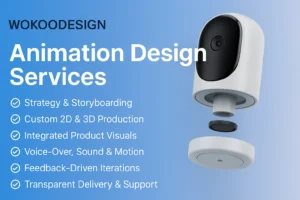Meta Description: Moving from design to development is where most good ideas stall. Here’s what actually goes wrong—and how to build a cleaner bridge between the two.
“This Isn’t What We Designed.”
That’s how the conversation started.
The client had just unboxed the first batch of pre-production units.
The team lead frowned, rotated the casing, then looked at us.
“It’s heavier. The hinge feels off. The button? Not like the prototype.”
This wasn’t a story about failure.
It was a story about the gap between design and development—one that happens in almost every project, whether you’re Google or a two-person startup.
🎬 Scene One: Design in Isolation
Back in Month 1, everything was going right.
The concept was strong.
Renderings were gorgeous.
The app mockup made investors smile.
But behind the scenes?
The design team had never spoken to the firmware engineer.
The CMF (color-material-finish) specs weren’t validated with real materials.
And the CAD file didn’t include internal ribs—because the ID team assumed “engineering will handle that.”
This wasn’t negligence.
It was siloed optimism.
🧩 Where It Usually Breaks
Moving from design to development isn’t one handoff.
It’s dozens—tiny, silent, often untracked.
Here’s where we’ve seen it unravel:
- Form factor vs. moldability
(That sexy curve? Can’t eject cleanly from a mold.) - Bill of materials vs. cost target
(Every part fits… until the BOM hits the CFO.) - UX gesture vs. actual latency
(The swipe is smooth in Figma, but your chipset says nope.) - Color spec vs. production tolerance
(Pantone 185C on your screen is not Pantone 185C on polycarbonate.)
Design doesn’t fail.
Handoffs fail.
🧭 What a Better Bridge Looks Like
At WokooDesign, we’ve built products for startups and multinationals.
The common denominator in success?
A continuous thread from sketch to shipment.
Here’s what that actually requires:
| Bridge Element | Why It Matters |
|---|---|
| Cross-functional kickoff | Avoids design assumptions becoming engineering blockers |
| Weekly syncs (design × engineering × sourcing) | Surfaces misalignments early—before they’re expensive |
| Factory-aware design reviews | Catches manufacturability flaws before tooling |
| CMF sample validation | Prevents “looks wrong” surprises at pre-production |
| DFM/FEA simulation feedback | Aligns ambition with physics |
It’s not about slowing down.
It’s about avoiding rework disguised as progress.
🎤 From a Partner Engineer’s POV
“Most designers think our job is to ‘make it work.’
But really, it’s to tell them why it won’t—and then help find what can.”
That’s from one of our longtime mechanical partners in Shenzhen.
She’s seen hundreds of prototypes come through.
Her advice?
“Loop us in early. Ask the factory what they wish you’d asked. Don’t throw the file over the wall and hope.”
✏️ Final Thought: It’s All Design
Design doesn’t stop at the sketch.
Development doesn’t start at tooling.
The best products blur the line between the two.
They treat constraints as creative boundaries—not technical roadblocks.
Design to development isn’t a relay race.
It’s a braided process—and when it’s done right, nothing gets lost in the handoff.
📬 Want your designs to survive the real world?
WokooDesign helps you turn brilliant ideas into buildable, beautiful, manufacturable products.
Let’s get it right—from first sketch to final shipment.



